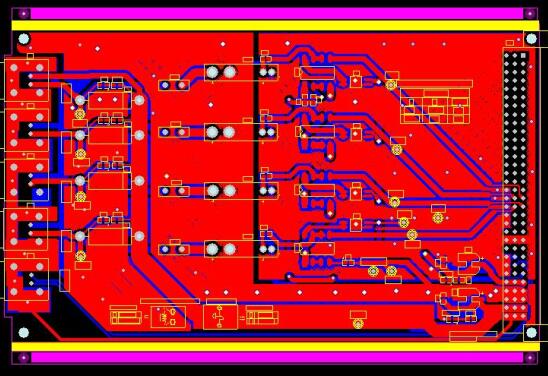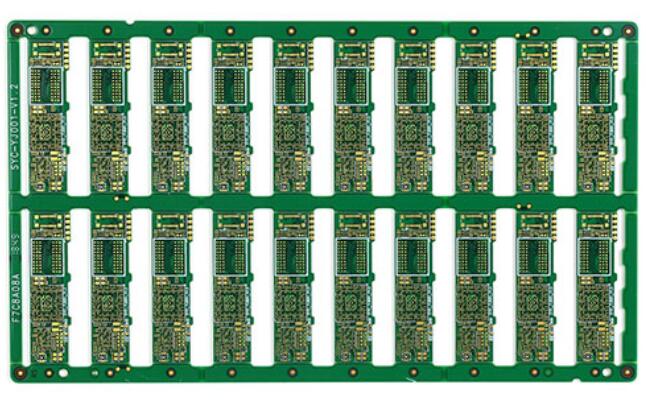What is a mark point
Mark point is the position identification point of the PCB used on the automatic placement machine in the circuit board design. Mark points can be bare copper, bare copper protected by a clear anti-oxidation coating. PCB board Mark point s are also called reference points, which provide a common measurable point for all steps in the surface mount process, ensuring that the SMT equipment can accurately locate PCB board components. Therefore, the Mark point is very important for SMT production.

The role of mark points
Mark points can be divided into single-board Mark points, jigsaw Mark points and local Mark points. The Mark point on a single board can locate the position of all circuit features; the jigsaw board can assist in locating the position of all circuit features; the local Mark point can locate the reference point mark of a single component to improve the placement accuracy, such as QFP, CSP, BGA There must be local Marks for important components, etc.
Mark point is the point used for positioning when using machine welding. The PCB of the surface mount component needs to set the mark point, because in the mass production of the SMT placement factory, the placement machine is manually or the machine automatically searches for the mark point for calibration. The selection of Mark points directly affects the placement efficiency of the automatic placement machine.
1. What is the mark point in PCB, commonly known as "mark point" In SMT technology, in order to solve the problem that the placement machine correctly mounts the components on the PCB, and the precise positioning point made on the PCB, the optical components of the placement machine pass this two
2. The marking point used to locate the moving placement machine. In fact, it is a single-layer special pad, which is generally placed on the diagonal (asymmetric) of each side of the PCB. It must have a certain size and no components can be placed around it in order to contrast with the background and facilitate machine identification.
PCB board spray tin introduction
PCB surface treatment technology, currently the most widely used is the spray tin process, also called hot air leveling technology, which sprays a layer of tin on the pad to enhance the conduction performance and solderability of the PCB pad.

SMOBC&HAL) is the most common form of surface coating for circuit board surface treatment. It is widely used in the production of circuits. The quality of tin spraying will directly affect the quality of soldering and soldering during subsequent customer production. Solderability; therefore, the quality of spray tin has become a key point of quality control for PCB board manufacturers.
The difference between lead spray tin and lead-free tin spray
1. The lead content of lead-free tin does not exceed 0.5, and that of lead-tin can reach 37.
2. From the surface of the sprayed tin, lead tin is relatively bright, and lead-free tin (SAC) is relatively dim.
3. Leaded tin is brighter, and lead-free tin (SAC) is darker, but the wettability of lead-free is slightly worse than that of leaded tin.
4. Lead will increase the activity of tin wire during the soldering process. Lead-tin wire is better than lead-free tin wire, but lead is toxic, and long-term use is not good for the human body, and lead-free tin will have a higher melting point than lead-tin. In this way, the solder joints are much stronger.
5. Lead in lead is harmful to the human body, but lead-free is not. The eutectic temperature of lead is lower than that of lead-free. The specific content depends on the composition of lead-free alloy. For example, the eutectic of SNAGCU is 217 degrees, and the soldering temperature It is the eutectic temperature plus 30~50 degrees. It depends on the actual adjustment. The leaded eutectic is 183 degrees. The mechanical strength and brightness of the eutectic are better than those without lead.
6. Lead-free tin spraying belongs to the environmental protection category and does not contain harmful substances "lead", with a melting point of about 218 degrees; the temperature of the tin spraying furnace needs to be controlled at 280-300 degrees; the peak temperature needs to be controlled at about 260 degrees; over. The reflux temperature is 260-270 degrees.
7. Leaded tin spray does not belong to the environmental protection category and contains harmful substances "lead", with a melting point of about 183 degrees; the temperature of the tin spray furnace needs to be controlled at 245-260 degrees; the peak temperature needs to be controlled at about 250 degrees; over. The reflux temperature is 245-255 degrees.